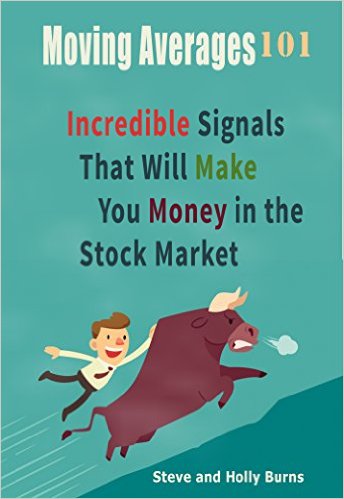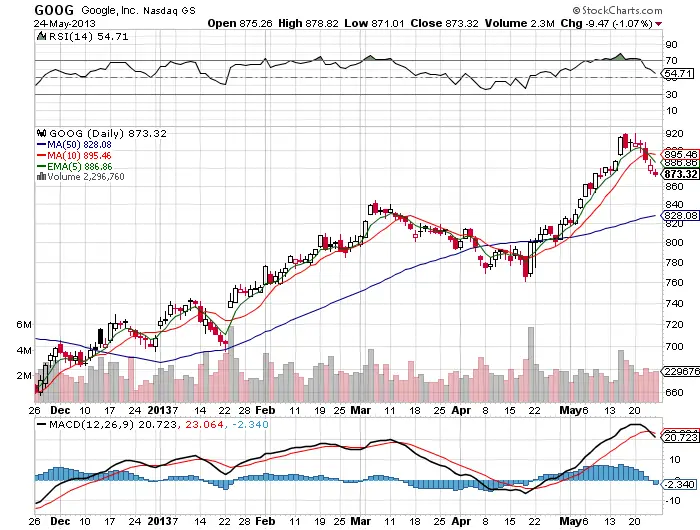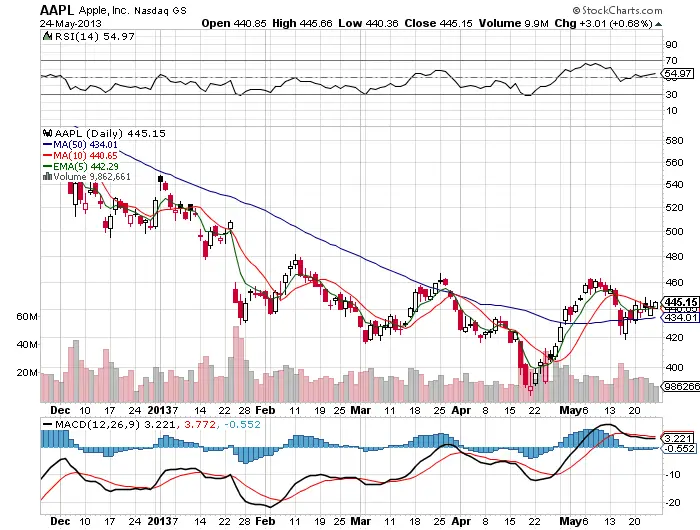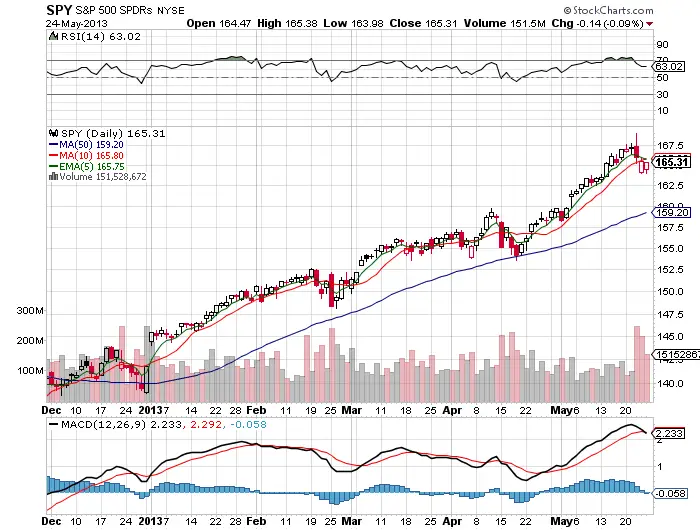Do you use moving averages in your trading? It is very interesting to lay a 50 day and 200 day moving average on to a chart over a year time frame. You will begin to see patterns develop. Bounce off the 50 day, a last chance for support at the 200 day etc. Each index, stock, and ETF has different key moving averages that have strong prices reactions.
It can really help your trading to know the key moving averages that get price reactions on the chart for your trading vehicle. Moving averages are a great place to look for clues to what levels are key areas for support and resistance.
Moving averages get there value by giving clues as to where the buyers and sellers are waiting at. The power of moving averages are real because they are used by many traders and in systematic trading as entries and exits. Also moving averages are an unbiased trend indicator, while trend lines are subjective, moving averages are facts.
Ten things traders need to know about moving averages:
1. The 21-day moving average commonly marks the short-term trend, the 50-day moving average the intermediate trend, and the 200-day moving average the long-term trend of the market. The SPY is generally the best tracking ETF for the market in general.
2. In sharply trending markets I have found the 5 day exponential moving average and the 10 day simple moving averages to have meaning as entries and exits to help manage my positions when the longer term moving averages are too far away.
3. Exponential Moving Averages apply more weight to recent price changes, while Simple Moving Averages view each data point in the time frame equally.
4. SMAs let you see where other traders both big and small are buying and selling. The meaning of moving averages as support and resistance points on charts are a result of how other traders are reacting when they are touched by price.
5. Where the price on the chart is in relation to the 200-day moving average is an indication of whether we are in a bull or bear market. Generally speaking bulls keep their confidence to stay long above the 200-day moving average, while bears like to sell short below it. Bears usually win and sell into rallies below this line, and bulls like to buy into pull backs above it. This line is one of the biggest signals in the market telling you which side to be on. Bull above, Bear below. many long term trend following systems are built with this as a primary indicator.
6. When the 50-day moving average pierces the 200-day moving average in either direction, it supposedly predicts a substantial shift in buying and selling behavior. The 50-day moving average rising through the bottom to get above the 200-day moving average is called a Golden Cross which is bullish, while the bearish piercing of the 50 day coming from above and falling beneath the 200 day is called a Death Cross.
7. A great second chance entry on a hot stock is a retaking or bouncing off a 50 day moving average for the specific stocks chart. Many institutional buyers are waiting at the 50 day sma to add to their long term positions.
8. Getting a monster stock with huge future earnings potential at the 200 day is like a gift from the trading gods and usually happens as we come out of a bear market. However if the 200 day is lost it is very dangerous and could begin a fall with no net, this is a time to short the old leaders that may go into death plunges.
9. Some traders use systems that give buy and sell signals when a shorter term moving average crosses over a longer one. Legendary trend trading pioneer Richard Donchian used a five and twenty day moving average cross over system for buy and sell signals.
10. Some traders watch for when a moving average begins to slope upwards or downwards and consider it as a signal of a trend beginning, continuing, or changing.
Each trader must decide how to incorporate moving averages into their own system and time frame. If you are not familiar with them I urge you to pull up the daily chart of your favorite trading vehicle and add in the 5 day ema, 10 day sma, and 50 day sma and look for trending patterns, it may surprise you.
For my complete Moving Average 101 book click here.



